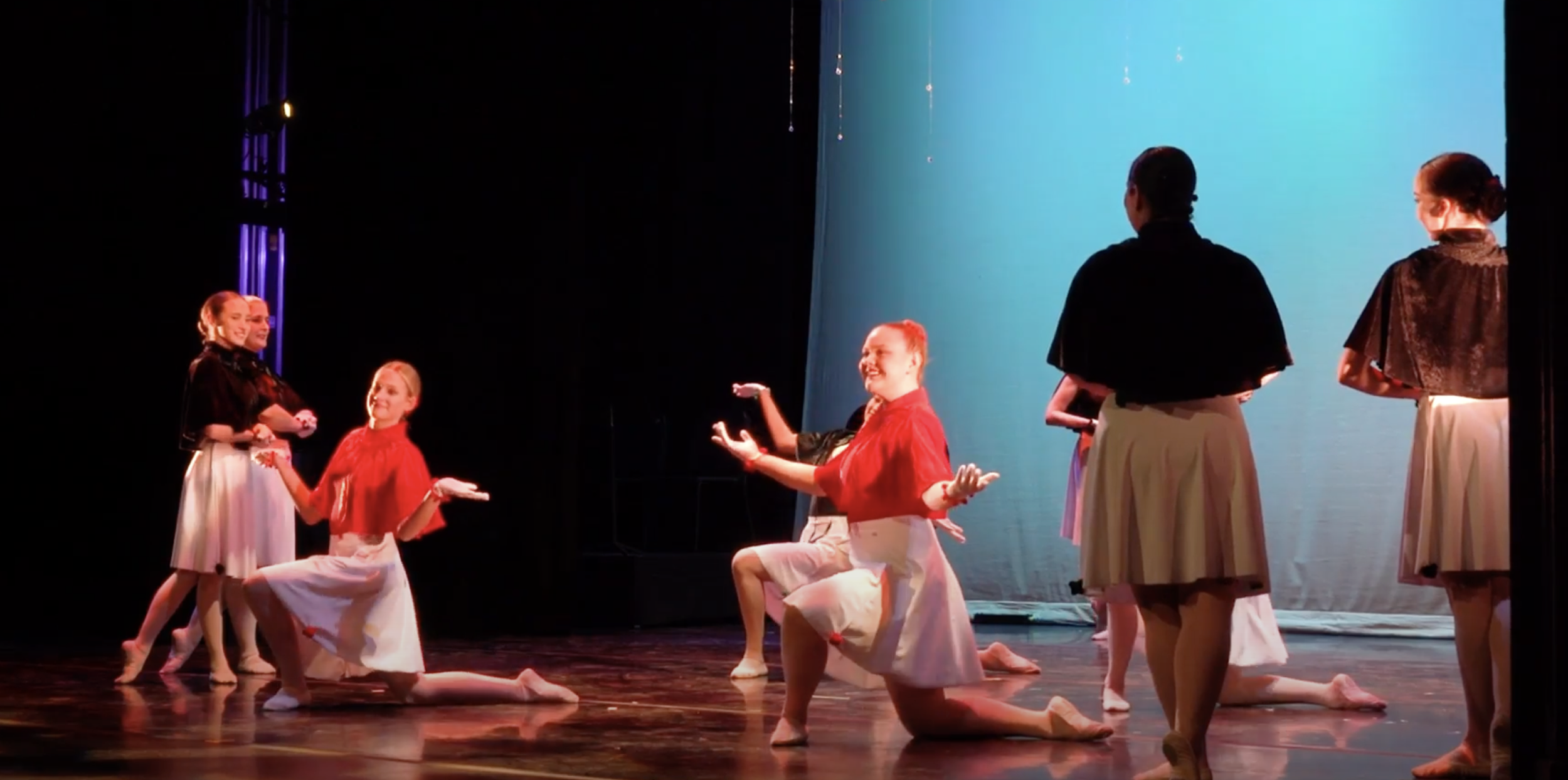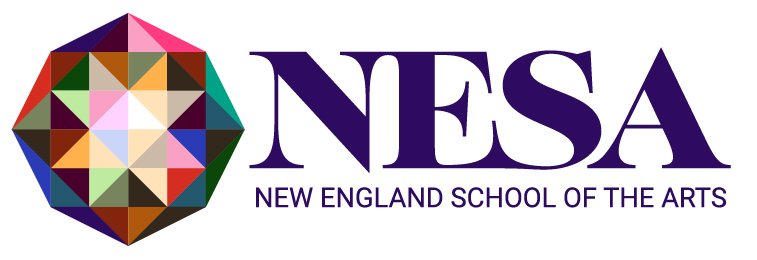
DANCE
Dance is experiential.
The physical and emotional frequency of a body in motion challenges, encourages, and inspires creativity. This challenges the body to push beyond its ‘comfort zone,’ motivates risk-taking in a safe learning environment, and inspires fearless, passionate creativity.
At NESA, we create a laboratory, experiential learning encounter that nurtures student growth for personal excellence and artistic integrity with joy!
JENNIFER GUESS
Director of Dance
Sample Graduation Track for Dance Students
-
First Semester
• Survey of English
• Algebra 1
• World Geography
• Physical Science 1
• Physical Education: Modern 1 and 2
• Improvisation
• Ballet 1 and 2
• French 1
Second Semester
• Survey of English
• Algebra 1
• Physical Science 1
• Physical Education: Modern 1 and 2
• Ballet 1 and 2
• French 1
-
First Semester
• World Literature
• Geometry
• World History
• Biology
• French 1
• Ballet 3 and 4
• Modern 3 and 4
• Concepts of Choreography
Second Semester
• World Literature
• Geometry
• Biology
• French 1
• Health
• Ballet 3 and 4
• Modern 3 and 4
-
First Semester
• American Literature
• Trigonometry
• U.S. History
• French 2
• Dance History 1 and 2
• Ballet 5 and 6
• Kinesiology, Anatomy and Physiology
Second Semester
• American Literature
• Trigonometry
• U.S. History
• French 2
• Dance History 1 and 2
• Ballet 5 and 6
• Kinesiology, Anatomy and Physiology
-
First Semester
• British Literature (double block)
• Personal Finance & American Government/Civics (double block)
• Ballet 7 and 8 (double block)
• Modern 7 and 8 (double block)
Second Semester
• Internship with a professional dance company
Course Offerings
Ballet Technique
Ballet 1A and 2A
The study of classical ballet for the entering student with little or limited previous study and experience. Emphasis is placed on fundamental principles of ballet technique: correct body placement, alignment, turn-out, transfer of weight, muscle strength, flexibility, coordination, musicality and classical port de bras. Students will learn and practice in detail the mechanics, dynamics and artistic qualities of basic ballet movements and develop self-discipline and a professional attitude.
Ballet 1B and 2B
The study of classical ballet for the entering student with previous study and experience. Students will work on refining their knowledge and execution of proper turnout and correct placement and alignment; these concepts will be integrated through the entire class. Students will learn and practice in detail the mechanics, dynamics and artistic qualities of ballet movements and develop self-discipline and a professional attitude.
Ballet 3 and 4
An in-depth study of the foundation of classical ballet technique mastered in the freshmen year with an emphasis on increasing physical, technical, musical and artistic expectations and skill. Students are also introduced to specific musical concepts that aid in the execution of their movement.
Ballet 5 and 6
The extension of in-depth study mastered in sophomore year with a strong emphasis on more complex coordination, technical skill, musicality and artistic expression.
Ballet 7 and 8
Senior year, a greater emphasis is placed on developing a harmonious balance between clarity of movement, mastery of the complexity and versatility of advanced level ballet technique, musicality, artistry and professionalism. Students are expected to become competitive for auditions to dance colleges and to be able to address the technical and behavioral demands of an advanced level class in the industry
Modern Technique
Modern 1 and 2
An introduction to the concept of modern dance through the technique developed by Martha Graham. By practicing floor work, standing work and traveling phrases in the Graham style, students will pay close attention to gesture, breath, focus and attack.
Modern 3 and 4
A continuation of the study of the Graham technique of modern dance. Emphasis is placed on increased technical strength and vocabulary. During the sophomore year, students will also be introduced to the dance technique of José Limón.
Modern 5 and 6
The study of advanced-intermediate work added to previous work in the Graham technique and Limón technique in Freshman and Sophomore years. The student is expected to master extensive knee work and standing falls. In the Junior year students will be introduced to the dance technique of Lester Horton. Students will execute complex technical and musical combinations with knowledge of stage and musical terms.
Modern 7 and 8
The study of advanced-intermediate work added to previous work in the Graham technique and Limón technique in Freshman and Sophomore years. The student is expected to master extensive knee work and standing falls. In the Junior year students will be introduced to the dance technique of Lester Horton. Students will execute complex technical and musical combinations with knowledge of stage and musical terms.
Career Skills
Survival Skills 1
The study of dance-related areas including dance etiquette, nutrition, anatomy, prevention and treatment of dance injuries, and dance vocabulary.
Survival Skills 2
A foundational approach to learning about the body with emphasis on its relationships to dance and creating strong and graceful movement.
Career Management
The study of the dancer's professional career, including contracts, unions, auditions, resumes, head shots, and self-produced concerts. In addition, alternative careers within the field of dance are explored through the use of guest speakers.
Supplementary Skills
Floor Barre & Understanding your Instrument
A study of the innovative technique based on the teachings of originator and founder, Zena Rommett. This class will help develop correct alignment, maximum turn-out, and improve balance as well as refine movement skills and increase vitality. Students analyze the function and development of dance in past and present cultures throughout the world, noting human diversity as it relates to dance and dancers.
Improvisation
This course is designed for serious dance students to learn the art of improvisation. The skills developed in this class are applicable to any creative process as well as everyday life. In this class we engage in exercises and improvisational structures to heighten our awareness, broaden our individual movement vocabulary and develop our skills in instant composition. The class also introduces basic partnering skills and often involves optional performance opportunities. This is a dynamic class that fosters both the ability to work in ensembles as well as strengthening the individual’s personal aesthetics and movement style.
Concepts of Choreography
In this class students will explore the elements of movement are space, time, and force (energy). The instrument is the body. The body moves in space and in time with force. The dance concepts should be viewed holistically. When participating in dance, all elements of dance are integrated all the time. The separation among concepts in this class will serve as a means to think about, plan, and discuss dance.
Dance History 1 and 2
The Dance History course is an introductory course to the history of dance, specifically dance in the United States. It offers an overview of its origins and development up to now. The objective of the course is to introduce students to the forms of dance and the dancer/choreographers whose passion, personalities, ideas, and body of work shaped concert dance in the United States, as well as serve as a base for student critical inquiry into its artistic and social influences, trends and challenges.
World Theatre/Dance
Jazz and Musical Theatre Technique: The study of American jazz dance techniques as used in commercial theatre, film and television. The student is expected to have an understanding both verbal and performance of this dance form through changing eras.
Tap Dance: The study of the basics of this vernacular dance form. Students will be expected to master tap vocabulary, techniques of rhythmic clarity and use of weight shift, traditional steps such as the Shim Sham, Waltz Clog, Soft Shoe and Time Steps as well as learn different stylistic approaches from musical theatre tap to rhythm tap. More experienced students will be placed in a more advanced class.
Kinesiology/Anatomy
This is an introductory course that surveys various sub-disciplines related to the study of human movement. Students will examine the areas of history, sociology, biomechanics, physiology, and psychology, as they relate to the sport and exercise environment.
Physiology
Human Physiology is a course designed to provide students with an understanding of the function, regulation and integration of human body organ systems. Emphasis is placed on homeostatic maintenance in health as well as in some disease processes
Points
Students will enter one of the two specified levels to strengthen the lower leg, ankles and feet in order to produce strong and graceful movement.
Performance
Choreography Workshop 1 and 2
The study of basic rhythmic, spatial, and dynamic materials used in the designing of dance. From short simple works, the student choreographer will progress to larger compositions and produce a complete work for evaluation by the dance faculty and formal presentation during the senior year at the annual April Dance Showcase.
Repertory
The Senior Dance Ensemble works with eminent guest artists from a variety of disciplines to collaborate, create, and perform dances that will be put into NESA repertory.
Performance
Each senior student must create a dance / visual movement piece incorporating all previous learned dance concepts. Students will choreograph larger compositions and produce a complete work for evaluation by the dance faculty and formal presentation during the senior year at the annual April Dance Showcase.


